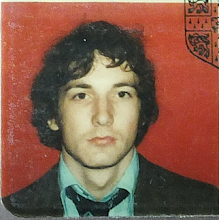I created these as a favour, being somewhat intrigued by the regiment, and others creating armies for the '45 may find some use for them according to the mantra "every wargames unit deserves to carry flags"!
Lord (or the Marquis of) Granby's Foot was originally sponsored by his father John Manners, 3rd Earl of Rutland. (The Marquis of Granby later became famous for his command of British troops in the Seven Years War; his cavalry charge at Warburg 1760, where he lost his hat and wig, gave rise to the expression "going bald headed at it".) The 71st was a provincial Nobleman's Regiment which, on becoming half completed, was taken into the Line on 4th November 1745. Consisting of ten companies, it was widely scattered with six companies at Leicester, two at Loughborough and two at Harborough. Once accepted into the regulars they were gathered together, initially at Nottingham on November 12th then afterwards they marched to Warwick on November 19th and then to the camp formed near Lichfield. At this stage there was still the threat of the Jacobite army heading towards London but, once they turned back at Derby, the regiment was sent to Newcastle upon Tyne on January 9th where it remained for the rest of the '45. Inactivity and poor quarters led to a mutiny and some desertions. On 27th June 1746 they were sent back to Leicester and there paid off with a bounty of 10s and 6d per man, which amounted to the large sum of £400, as the regiment had reached the unusually high number of 780 men. It was disbanded in August.

As can be seen from the attached list of officers in the 71st it was very much a family regiment; this list is taken from an out of copyright biography of the Marquis of Granby which can be found here: https://archive.org/details/someaccountofmil00mann Granby himself spent much of his time with the Duke of Cumberland as an aide de camp and did not serve with his regiment.
Most of the provincial units seem to have been clothed in blue. A grenadier cap of the 71st still survives with the cap of maintenance and peacock crest of the Granby/Manners coat of arms. A portrait of Granby probably depicts the uniform of the 71st, in blue with red facings. We have no information on any colours they carried, if they did at all, but if they did I feel they should have been as attractive as these "recreations" of mine, whose general design I based on those of the surviving colour of Scipio Duroure's infantry regiment 1745 which shows his coat of arms. The Regulation of 1747 stipulated that henceforth no colonel was "to put his arms, crest, device or livery on any part of the appointments of the Regiment under his command". This would include the coats and drums of the drummers and the caps of the grenadiers, as well as the regiment's colours. This assertion of central authority, taking away many of the privileges colonels of regiments had previously enjoyed, applied throughout much of Europe from this period.























